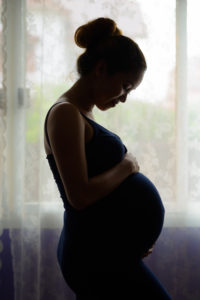My Third Trimester
Week 35
Estimated Reading Time: 5 minutes Now at 35 weeks, your baby is putting on a half a pound a week, making his or her little limbs nice and plump. Your baby is nearing his or her birth length, roughly 18 inches, and essential fat is accruing, particularly in the shoulder area. His or her brain is maturing rapidly.
Now at 35 weeks, your baby is putting on a half a pound a week, making his or her little limbs nice and plump. Your baby is nearing his or her birth length, roughly 18 inches, and essential fat is accruing, particularly in the shoulder area. His or her brain is maturing rapidly.
Your baby may now be in the ideal position for delivery, with a head down posture in the pelvis. Your baby’s position in the uterus will change frequently during the first two trimesters. Sometimes by week 32 and often by week 36, your baby will be head-down and ready for delivery. However, your baby can be in three positions. The first is called a vertex position, with the baby’s head presenting first in your pelvis. The second is a breech position, with the baby’s feet presenting first in the pelvis. If your baby is in a breech position and not engaged too far down into in your pelvis, your health care team may attempt to rotate the baby into a vertex position prior to your due date. And the third position is a transverse position, with the baby lying sideways.
If your health care team recommends trying to rotate your baby, please speak openly with them about this procedure, conduct further research and make this decision carefully. Like most important decisions, there are advantages and disadvantages to this procedure. You should make yourself aware of them so you are making the most educated and informed decision. The umbilical cord and placenta should also be checked before having this procedure.
Group B Strep (GBS)
 According to ACOG’s updated guidelines, rectovaginal swab specimens will be taken and cultured between 36 0/7 and 37 6/7 Weeks gestation to test for the presence of GBS if you didn’t already have a positive test earlier in your pregnancy. This test is extremely important as the use of preventative antibiotics for moms who test positive for GBS must be given during labor to prevent the transmission of this potentially lethal germ to their babies. According to Ronald S. Gibbs, MD, ACOG, “National guidelines to prevent mother-to-infant GBS transmission have led to an 80% reduction in early onset sepsis in neonates.”
According to ACOG’s updated guidelines, rectovaginal swab specimens will be taken and cultured between 36 0/7 and 37 6/7 Weeks gestation to test for the presence of GBS if you didn’t already have a positive test earlier in your pregnancy. This test is extremely important as the use of preventative antibiotics for moms who test positive for GBS must be given during labor to prevent the transmission of this potentially lethal germ to their babies. According to Ronald S. Gibbs, MD, ACOG, “National guidelines to prevent mother-to-infant GBS transmission have led to an 80% reduction in early onset sepsis in neonates.”
If you tested positive in the beginning of your pregnancy, you health care team most likely will not test you again. Your team has probably already decided to treat you with antibiotics during labor. Be sure to remind your nursing staff upon delivery day just to be safe. This would also mean that upon the first sign of labor, you should not wait to go to L&D. It is ideal to begin the antibiotic therapy several hours prior to your water breaking.
Did you know that approximately 10-30% of pregnant women are contaminated with GBS and that roughly 2% of these pregnant moms will pass this germ during delivery to their babies? Babies will show signs of a GBS infection as early as 6 hours after delivery and as late as 7 days or more after birth. GBS may cause an infection in your baby’s spinal cord, lungs, blood (sepsis) or brain. Although fatal in 5% of infants carrying GBS, this bacterium is the prime cause of infectious death among newborns. Moms who are under the age of 21, black or Hispanic are at an increased risk.
According to ACOG’s Committee on Obstetric Practice, if you test positive for GBS, you will be given antibiotics once labor begins and delivery approaches if:
- You have had a previous baby with invasive GBS infection.
- You have had GBS bacteriuria during any of your three trimesters during this pregnancy.
- Your culture has been positive for GBS during your present pregnancy.
- Except if you are having a cesarean section before the onset of labor and your amniotic membranes are intact (water’s not broken or leaking).
- You have gone into labor and it is not known if you are GBS positive or negative. Maybe your culture was not done, it is unfinished or the results are not known or:
- You are less than Week 37 gestation.
- Your amniotic membrane ruptures (waters broken or leaking) greater than or equal to 18 hours prior to labor.
- Your temperature at the time of labor is greater than or equal to 100.4*F (or greater than or equal to 38.0*C).
- A rapid test for GBS, a NAAT (nucleic acid amplification test), is positive.
Be sure you understand the complexity of GBS. If you are positive for GBS, don’t hesitate to ask any questions or voice your concerns with your health care team. Discussing and understanding your proposed protocol for the treatment of GBS is of extreme importance.
If your baby develops a fever within the first three months following delivery, have your baby checked in the ER immediately. For more information on how GBS can impact your pregnancy and your newborn baby, please visit ACOG and Group B Strep International.
